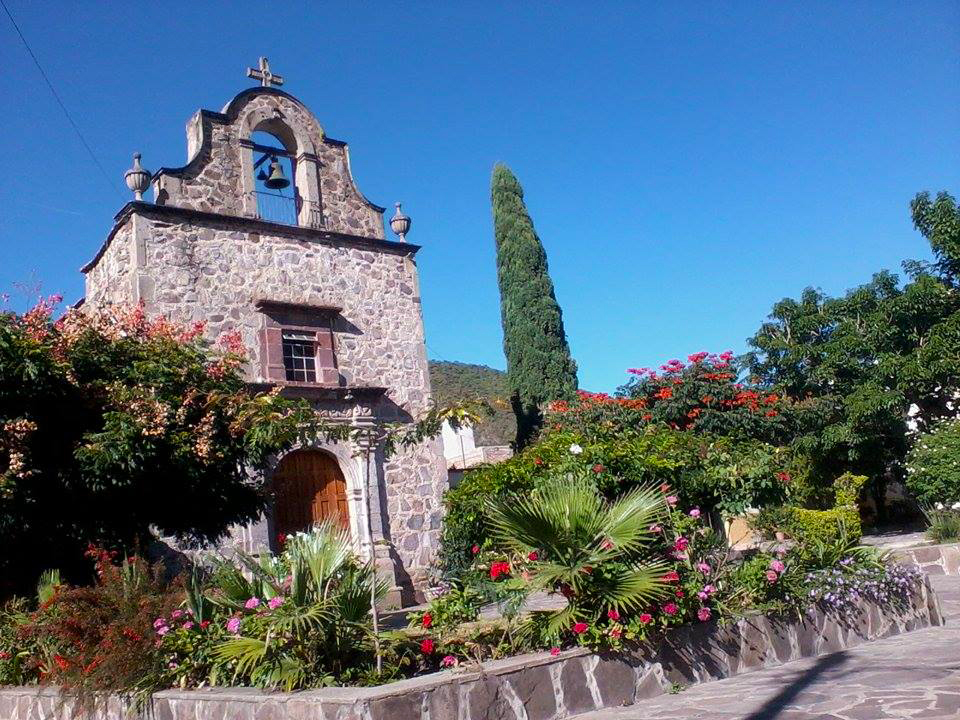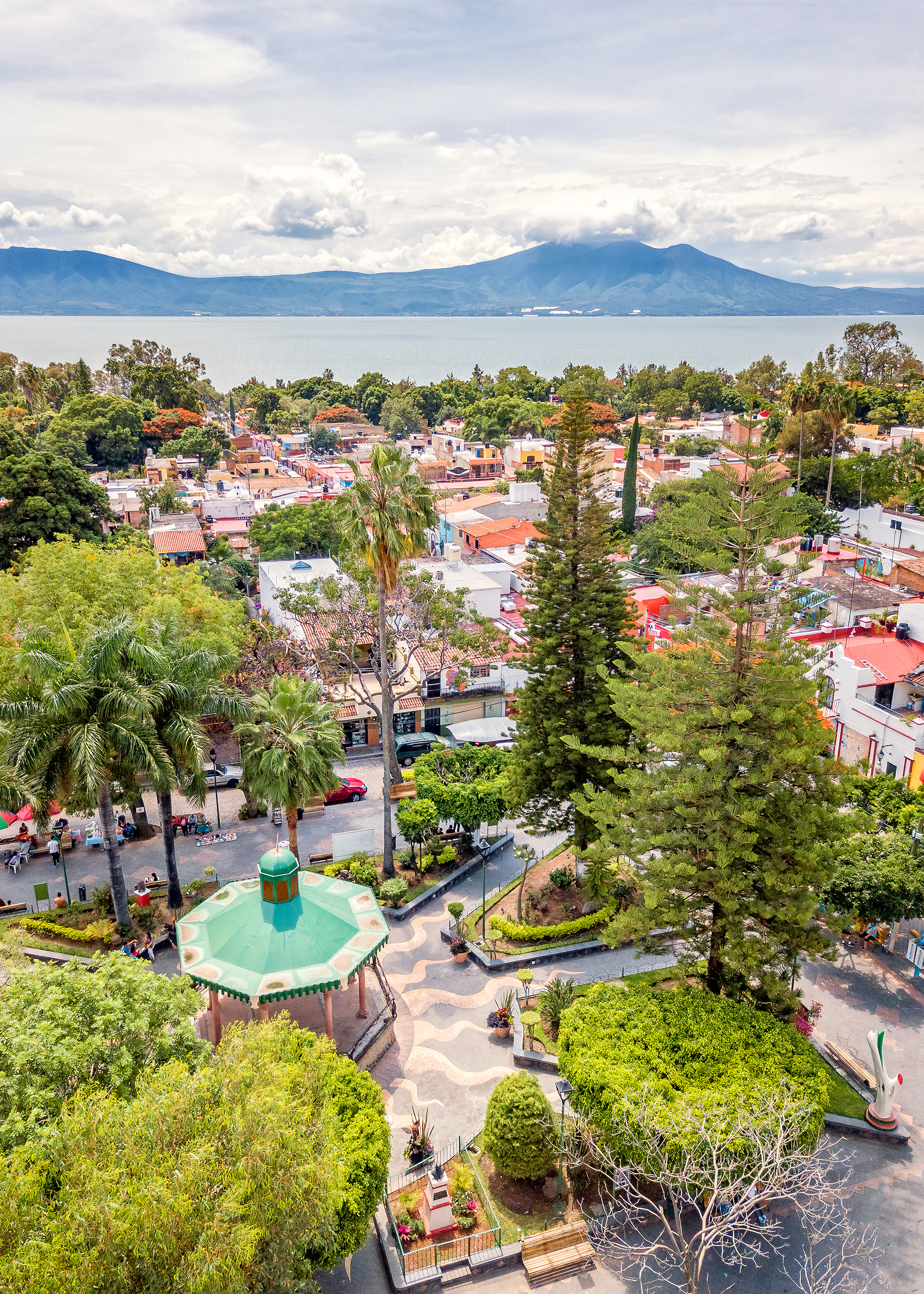Ajijic, Jalisco on:
[Wikipedia]
[Google]
[Amazon]
Ajijic () is a town about west from the town of Chapala, part of the
 Ajijic is located above sea level in Mexico's Volcanic Axis also known as the
Ajijic is located above sea level in Mexico's Volcanic Axis also known as the
 Up until the arrival of the Spanish, the region was occupied by nomadic Indian tribes, probably the
Up until the arrival of the Spanish, the region was occupied by nomadic Indian tribes, probably the

 The Ajijic population of about 11,000 excludes the hundreds of visitors from
The Ajijic population of about 11,000 excludes the hundreds of visitors from
municipality
A municipality is usually a single administrative division having municipal corporation, corporate status and powers of self-government or jurisdiction as granted by national and regional laws to which it is subordinate.
The term ''municipality' ...
(also named Chapala), in the State of Jalisco
Jalisco, officially the Free and Sovereign State of Jalisco, is one of the 31 states which, along with Mexico City, comprise the 32 Political divisions of Mexico, Federal Entities of Mexico. It is located in western Mexico and is bordered by s ...
, Mexico
Mexico, officially the United Mexican States, is a country in North America. It is the northernmost country in Latin America, and borders the United States to the north, and Guatemala and Belize to the southeast; while having maritime boundar ...
. It is situated on the north shore of Lake Chapala
Lake Chapala (, ) has been Mexico's largest freshwater lake since the desiccation of Lake Texcoco in the early 17th century.
It borders both the states of Jalisco and Michoacán, being located within the municipalities of Ocotlán, Jalisco, ...
, surrounded by mountains. Ajijic enjoys a moderate climate year-round. The population of Ajijic was 11,439 as of the 2020 census.
Geography
 Ajijic is located above sea level in Mexico's Volcanic Axis also known as the
Ajijic is located above sea level in Mexico's Volcanic Axis also known as the Trans-Mexican Volcanic Belt
The Trans-Mexican Volcanic Belt (), also known as the Transvolcanic Belt and locally as the (''Snowy Mountain Range''), is an active volcanic belt that covers central-southern Mexico. Several of its highest peaks have snow all year long, and dur ...
.
The Chapala Lake basin has a year-round average temperature of about . Due to Ajijic's tropical latitude and relatively high elevation, it is seldom unpleasantly hot or humid. The rainy season begins in June and lasts until October. The average rainfall is . Even during the rainy season, precipitation generally occurs during the evening or at night.
December and January are the coolest months, with nighttime lows just above . May is the hottest month, just before the beginning of the rainy season.
Overall, there is very little temperature variation year round: daytime highs in January are around ; while daytime highs in May range from to .
History
 Up until the arrival of the Spanish, the region was occupied by nomadic Indian tribes, probably the
Up until the arrival of the Spanish, the region was occupied by nomadic Indian tribes, probably the Coca people The Coca people are part of one of the oldest indigenous groups who live in what is now the state of Jalisco, Mexico.
History
The Caxcan, an ethnic group in southernmost Zacatecas, northern Jalisco, and part of Aguascalientes, south to Lake Chapal ...
that settled the northern shore. There seem to be many explanations, and meanings for the names Chapala and Ajijic, all of which are Indian place names, probably derived from Nahuatl
Nahuatl ( ; ), Aztec, or Mexicano is a language or, by some definitions, a group of languages of the Uto-Aztecan language family. Varieties of Nahuatl are spoken by about Nahuas, most of whom live mainly in Central Mexico and have smaller popul ...
, the native language of the area.
Ajijic, formerly spelled Axixic, means “place of water” or “place where water bubbles up” in Classical Nahuatl
Classical Nahuatl, also known simply as Aztec or Codical Nahuatl (if it refers to the variants employed in the Mesoamerican Codices through the medium of Aztec Hieroglyphs) and Colonial Nahuatl (if written in Post-conquest documents in the Lat ...
. Don Andres Carlos and Fray Martin founded Ajijic in 1531 because it had a good source of water. It is one of the oldest villages in Western Mexico. By 1833 it is said to have had a population of no more than 2,000.
Ajijic has attracted foreign artists and writers since the 1890s.Tony Burton, "Lake Chapala Through The Ages, an Anthology of Travelers' Tales" (Sombrero Books, BC Canada, 2008) Englishmen Nigel Millet and Peter Lilley settled in Ajijic before World War II and under the pen name of Dane Chandos wrote ''Village in the Sun'' (1945, G.P. Putnam's Sons), about building a house on the edge of the lake in nearby San Antonio Tlayacapan. Using the same pen name, Peter Lilley later teamed up with Anthony Stansfeld (an English academic) to write ''House in the Sun'' (1949), which concerns the operation of a small inn in Ajijic (now known as the “Old Posada”). These books were written when the main road from Chapala was unpaved, ice was delivered by bus from Guadalajara, and electricity was just being installed.
Ajijic today

 The Ajijic population of about 11,000 excludes the hundreds of visitors from
The Ajijic population of about 11,000 excludes the hundreds of visitors from Guadalajara
Guadalajara ( ; ) is the capital and the most populous city in the western Mexican List of states of Mexico, state of Jalisco, as well as the most densely populated municipality in Jalisco. According to the 2020 census, the city has a population ...
( north) who spend weekends and vacations there. Many retired Americans and Canadians now live in Ajijic, with an estimate that immigrants make up more than half of the population in the winter.
The influx of large numbers of immigrants has been received with mixed feelings by the local population. As the economy becomes more reliant on tourism, many businesses struggled when that population did not arrive in full strength due to the COVID-19 pandemic.
Ajijic is a very festive village with many holidays, special events and parades about once a month. Mexico's National Chili Cook-Off has been held in Ajijic since 1978 and attracts thousands of Mexican and international visitors each February. In addition to the cooking competition and chili eating, it attracts scores of vendors selling a large variety of items including art, crafts, clothing and novelties. Ajijic's “Chupinaya Carrera de Montana” attracts about 500 males and females from all over Mexico each July for a grueling 13.8 kilometer foot race to the summit of Cerro La Chupinaya (2,400 meters, 7,874 feet) and back to the Ajijic Plaza in about 90 minutes for the best runners/climbers. Hundreds are attracted each September to the unmanned Hot Air Balloon event (Regatta de Globos) where local groups enter their homemade tissue paper balloons some as big as 200 cubic feet.
The biggest local event of the year is the San Andreas Fiesta dedicated to Ajijic's patron saint. The Fiesta dominates Ajijic's central plaza and surrounding streets for nine days in late November and attracts the majority of Ajijic residents.
On 1 December 2020, the town of Ajijic, located on Lake Chapala, was designated as the ninth Magical Town of Jalisco (Pueblo Mágico
Pueblo refers to the settlements of the Pueblo peoples, Native American tribes in the Southwestern United States, currently in New Mexico, Arizona, and Texas. The permanent communities, including some of the oldest continually occupied settlemen ...
) by the federal tourism government.
References
External links
{{Authority control American diaspora in Mexico Canadian diaspora in Mexico Populated places in Jalisco